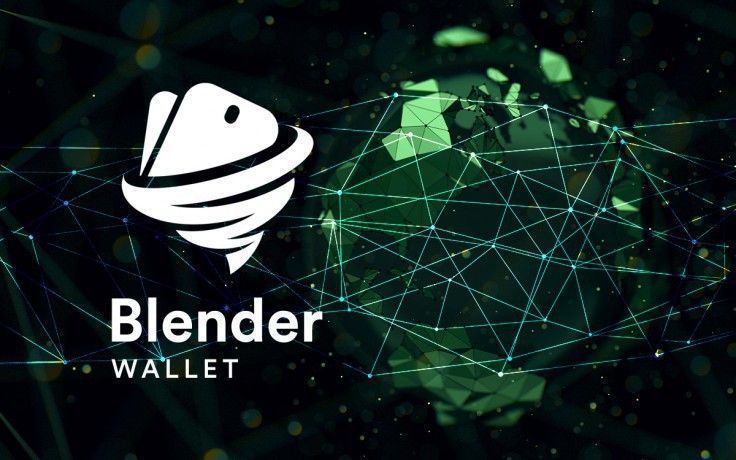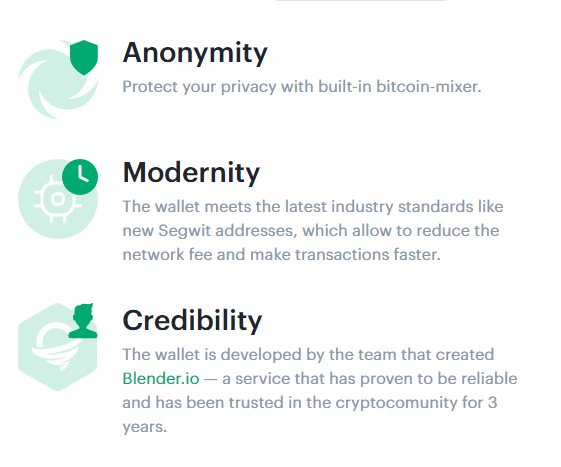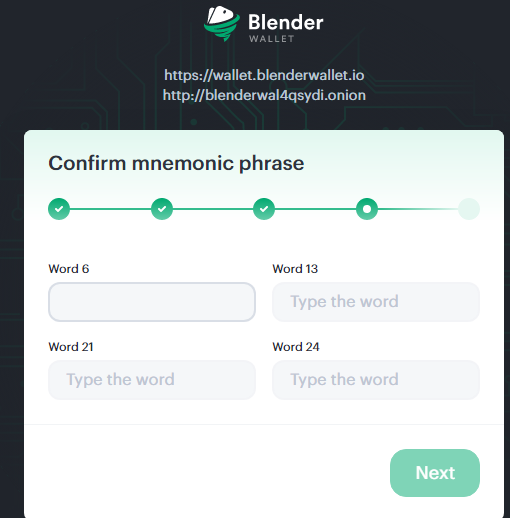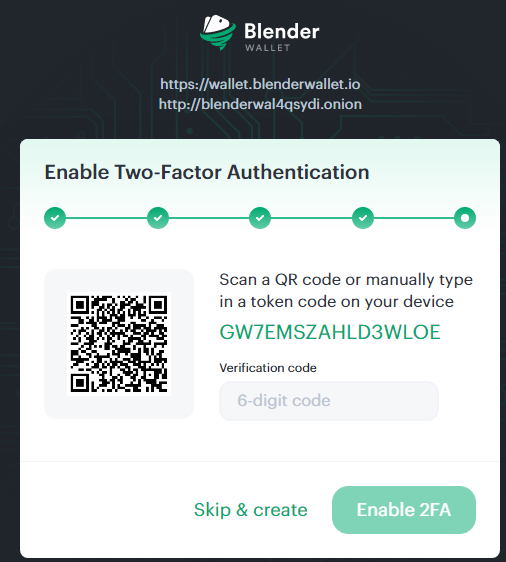Blender Wallet Represents A New-gen Approach To Anonymous Bitcoin Wallets
Updated: Dec 07, 2020 at 12:25

Launched in September 2020, Blender Wallet by Blender.io, a recognized privacy team, represents a new-gen approach to anonymous Bitcoin (BTC) wallets. It merges an unparalleled level of decentralization and an intuitive user interface.
Why do you need a decentralized Bitcoin (BTC) wallet with a built-in mixer?
A decentralized cryptocurrency wallet refers to a type of service with zero points of centralization. This means that it does not rely on the server, node or website. Users of decentralized wallets are solely responsible for their keypairs.
Don’t trust; verify
Decentralized (trustless, noncustodial) wallets eliminate the need for its customers to rely on the service team when storing crypto and authorizing/receiving transactions. Thus, their customers are less vulnerable to the issues typical with CEXs: account restrictions, withdrawal delays, government shutdowns and so on.
It is very difficult for malefactors to hijack users’ data or coins when they are not allocated to centralized storage.
Privacy first
Also, issues of tracking and deobfuscating addresses and transactions are really thorny in 2020. Regulatory watchdogs in many countries are exploring more and more tools to find out how Bitcoiners use their assets and for which purposes?
Even the coins that emphasize their devotion to privacy - Monero and ZCash, for example - are targeted by regulators. Thus, using a mixer, a service that “blends” the transactions to obfuscate their routing, is a must for contemporary crypto users.
Introducing Blender Wallet: when privacy meets powerful functionality
Blender Wallet is a flagship B2C product by top-tier privacy-focused team Blender.io. It should be referred to as a noncustodial decentralized multi-purpose Bitcoin (BTC) wallet with built-in coin mixer.
Blender Wallet: unparalleled privacy, intuitive UX, high performance

Main functions of Blender Wallet
First of all, Blender Wallet provides its customers with a safe and secure environment for storing their Bitcoins (BTC). Blender Wallet supports Segregated Witness Bitcoin (BTC) scalability technology and assists users in creating SegWit addresses for fast and cheap transfers.
All Blender Wallet transactions are obfuscated through the in-app Bitcoin (BTC) mixer. Thus, all user activity in the Bitcoin (BTC) network becomes literally untraceable. It is the pioneering product that allows users to reach that level of anonymity without special blockchain skills.
At press time, Blender Wallet is available as a web interface, while the mobile application for Android devices is coming soon.
Useful features for retail payments
Blender Wallet is one of a few wallets that allows all clients to manage multiple Bitcoin (BTC) addresses simultaneously. It may be of crucial importance for freelancers or contractors. On the other hand, employers who decided to pay employee salaries in crypto will enjoy a “one-to-many” transaction feature.
Users can label their transactions in one click to manage their expenses easily. For instance, Bitcoiners onboarded by Blender Wallet can identify payments related to work, recreation and entertainment, digital bank transfers and other categories.
Similar labels can be attributed to addresses as well. Once labeled, the owner of the wallet can search for addresses and transactions using customized keywords.
All transactions authorized and received with Blender Wallet are charged with zero service fees, so clients only pay the miner’s commission to have their transactions included in new blocks. Setting up your decentralized Bitcoin (BTC) wallet with Blender Wallet
Since Blender Wallet is a KYC-agnostic platform, it does not require users to disclose their critical personal data, e.g., real name, phone number, email addresses and country of residence, among other things.

It takes five steps maximum to get your Bitcoin (BTC) account set up with Blender Wallet.
1. First, you need to click on the “Create” button on the main page and pass captcha to avoid spam registrations.
2. In the second step, the user creates his/her own encoded mnemonic (like an ordinary password). This will help the user to access funds but will not be sufficient unless he/she inputs a seed phrase (see next step).

3. The third step is a crucial one. Blender Wallet gives the user his/her seed (“mnemonic”) phrase of 24 words. This phrase should be secured in physical storage. Blender Wallet does not store passphrases and mnemonic phrases.

4. The next step just asks the user to verify his/her mnemonic phrase, or four words out of 22.

5. Two-factor authentication is the last step. It is not necessary and can be skipped. If it is important for you, you should prepare a second device through which to authorize your usage of Blender Wallet.
Once this step is completed or skipped, the Bitcoiner can enjoy a seamless anonymous BTC storage and transaction experience with Blender Wallet.
Bottom Line
Blender Wallet by Blender.io represents a new type of privacy-focused Bitcoin (BTC) wallet. It merges the benefits of full anonymity and intuitive user experience. Its functionality is enhanced by unparalleled retail payment features.
Also, Blender Wallet offers all of its clients in-app Bitcoin (BTC) mixers to obfuscate critical transactional data.
Disclaimer. This article is paid and provided by a third-party source and should not be viewed as an endorsement by CoinIdol. Readers should do their own research before investing funds in any company. CoinIdol shall not be responsible or liable, directly or indirectly, for any damage or loss caused or alleged to be caused by or in connection with the use of or reliance on any such content, goods or services mentioned in this article.
Price
News
News
News
Price

(0 comments)